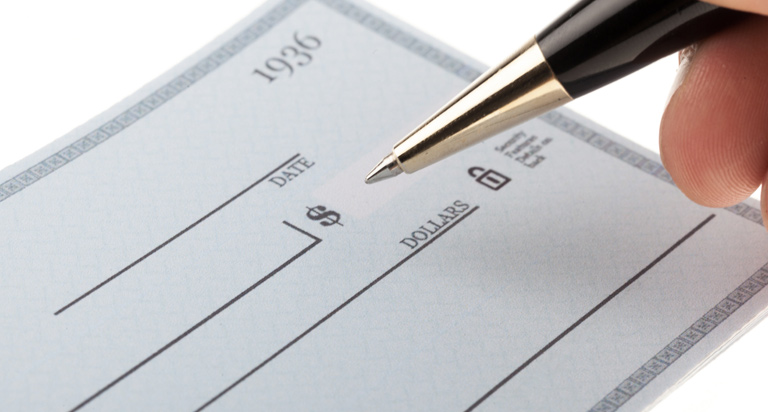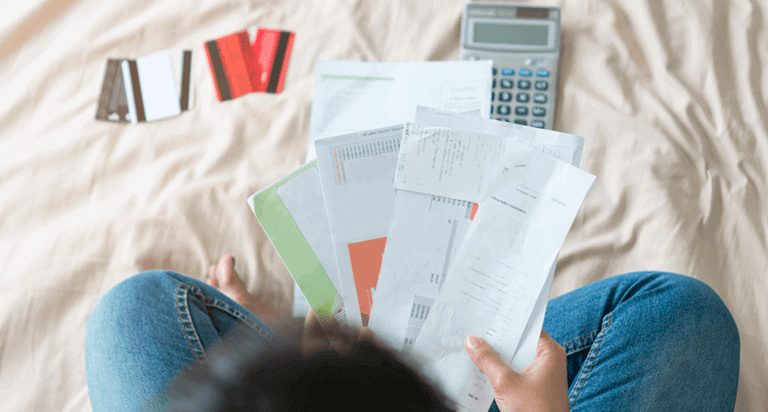How to Write a Check


Highlights:
- Checks are a widely accepted form of payment and knowing how to write one is an important skill to have, even when online banking is commonplace.
- In some cases, such as with small businesses, paying by check may be the best option.
- You should treat your checkbook in the same way that you would treat a debit or credit card by keeping it in a safe place.
- As long as a check hasn't been processed, you can contact your bank and stop the transaction.
Even though most of the common day-to-day financial transactions are electronic, knowing how to write a check remains a valuable skill. In fact, checks are still used in the business world and, if you'd rather not carry cash on you, can come in handy for paying bills or buying goods.
Understanding the importance of check writing
It's quite possible that you've never had to write a check before and when most businesses accept electronic payments, it's normal to wonder why writing a check is an important skill. Despite not being as commonplace as before, checks are still a valuable payment method. For starters, they are widely accepted as a payment option. They may also be the preferred payment method for individuals and small businesses that aren't set up to receive electronic payments. In some cases, like putting a down payment on a home, checks may be required due to the high sum of money being transferred.
However, the benefits of being able to write checks, and prioritizing checks over other payments methods, go beyond simply paying for goods and services.
Benefits of using checks
If you use checks for your day-to-day spending and budgeting, some key benefits include:
- No need to carry cash. With checks as your primary method of payment, you won't necessarily need to carry cash or cards on you.
- Not dependent on technology. Have you ever tried to make a payment only to find that internet connections or websites are down? Checks bypass technology and work even if apps or websites are down.
- Halting payments is possible. As long as the check hasn't been processed, you can request that your bank stop the payment from going through. Although this requires you to be proactive, it can help to prevent fraud.
Using checks for expense tracking
If you have a budget and are focused on sticking to it, you likely spend some time each month tracking your expenses. In this case, using checks is a direct and hands-on way to keep on top of your spending. This is because you'll log the amount of each check on its stub, which provides you with a built-in record of what was spent and when. This makes your checkbook an invaluable tool for tracking your expenses.
You've likely heard about balancing a checkbook, which is when you go through your checkbook and total up payments, along with any other deposits and withdrawals, and confirm whether those transactions add up.
With online banking being more commonplace today, it's possible to track your balance using a website or app. However, checks still offer a practical option for monitoring your spending.
A step-by-step guide to writing a check
To write a check, follow this simple step-by-step process:
- Write the date. Fill out the date in the top-right corner. Use the current date at the time of writing the check, or a future date if the recipient agrees on this (postdated). Backdating with a date that is prior to what it should be a check is typically not permitted. While using a future date is not illegal, keep in mind that it may be possible for the recipient to cash the check before that date, so it's important to make sure there are sufficient funds in the bank account for the check to be cashed.
- Add the recipient's name. Provide the name of the person or business the check is for in the box that reads "Pay to the order of" or some similar text. Take care to spell the name correctly and in full, as the check may not be honored if this detail is incorrect.
- Add the value in numbers. Fill out the two areas where the check amount is requested. One area is a box with a dollar sign; the other is a line where you'll be asked to provide the amount in words. If the check is for an amount with cents, such as $50.32, use a decimal point to mark the cents in the smaller box. For larger amounts, use a comma and still add the number of cents. For example, $1,000 would be written as $1,000.00—using a comma and a decimal point. Write the numbers as big as you can while ensuring they fit in the box to prevent people from fraudulently altering the amount.
- Spell out the value. Write out the amount in full in the large field under the recipient's name. For example, $50.32 would be "fifty and 32/100." For $1,000.00, you'd write, "One thousand and 00/100" to indicate that there are no cents. Be sure to start writing as close to the edge of the left-hand line as possible and to draw a line from the end of your writing to the right-hand side, filling the entire amount field. This prevents people from altering the writing to change the amount on the check.
- Add a memo. The memo field is optional, but it's useful to include a note saying what the check is for. If you're paying a bill, for example, you could include the bill's reference number to help the recipient marry up the check to the correct bill.
- Sign the check. The bottom right-hand corner of the check will have a signature field. Sign the check there. It's crucial to not forget this step, because unsigned checks cannot be cashed.
Avoiding common mistakes in check writing
Before you hand over a check, make sure that you've properly filled out all required fields as listed above.
Due to the manual nature of writing checks, mistakes can happen. No matter what the issue is, your safest option is to start over with a new check and make sure that the faulty check can't be used. To make sure nobody can cash the faulty check, write "VOID" across it. It's best to make sure that your handwriting is easy to read. If you normally write in cursive, consider switching to print and using large characters to use up as much space as possible.
Ensuring safety while writing checks
You'll always want to fill out a check in dark ink to reduce the possibility of fraud and tampering. Moreover, once you've spelled out the full amount, fill the empty space of the field with a line to prevent anybody from altering the amount. Finally, add your signature to the check to endorse it.
Most importantly, you should never sign a blank check. Because your signature acts as an endorsement of the check, a person would be able to put any amount on the check and cash it, potentially emptying your account.
If your checkbook is lost or stolen, treat it as you would a credit or debit card and inform the bank as soon as possible. Checks that haven't been cashed can be halted, so taking action quickly means it will be more likely that the bank will be able to protect you from fraud.
How to safely mail a check
If you need to send a check in the mail, be sure to use a security envelope or conceal the check between other papers so that it can't be seen. If possible, mail checks via the post office rather than a personal mailbox. If you leave the mail sitting in an unsecured personal mailbox, anyone can come by and snatch it before the postal worker picks it up.
Common questions about check writing
Can I write a post-dated check?
It is possible to write a post-dated check. This is a check that is intended to be cashed on the date provided, which could be any time in the future. Keep in mind that while many banks honor these dates, some banks may process checks before that date, leading to overdraft fees or bounced checks.
How long are checks valid for?
Most checks are valid for six months (or 180 days). It's advisable to cash checks as quickly as possible to avoid encountering an issue with an expired check. Legally, banks are only required to honor checks for six months. Beyond that, the bank may contact the account holder for approval or bounce the check.
Exploring alternatives to check writing
If you're still on the fence about paying with checks, you should know that they aren't the only alternatives to cash and cards. In some cases, you can use electronic payments systems like PayPal® to make purchases online or pay bills.
These payment options are typically faster, are easier to keep track of and offer more security options than sending a check.
Get your free credit score today!
We get it, credit scores are important. A monthly free credit score & Equifax credit report are available with Equifax Core CreditTM. No credit card required.



